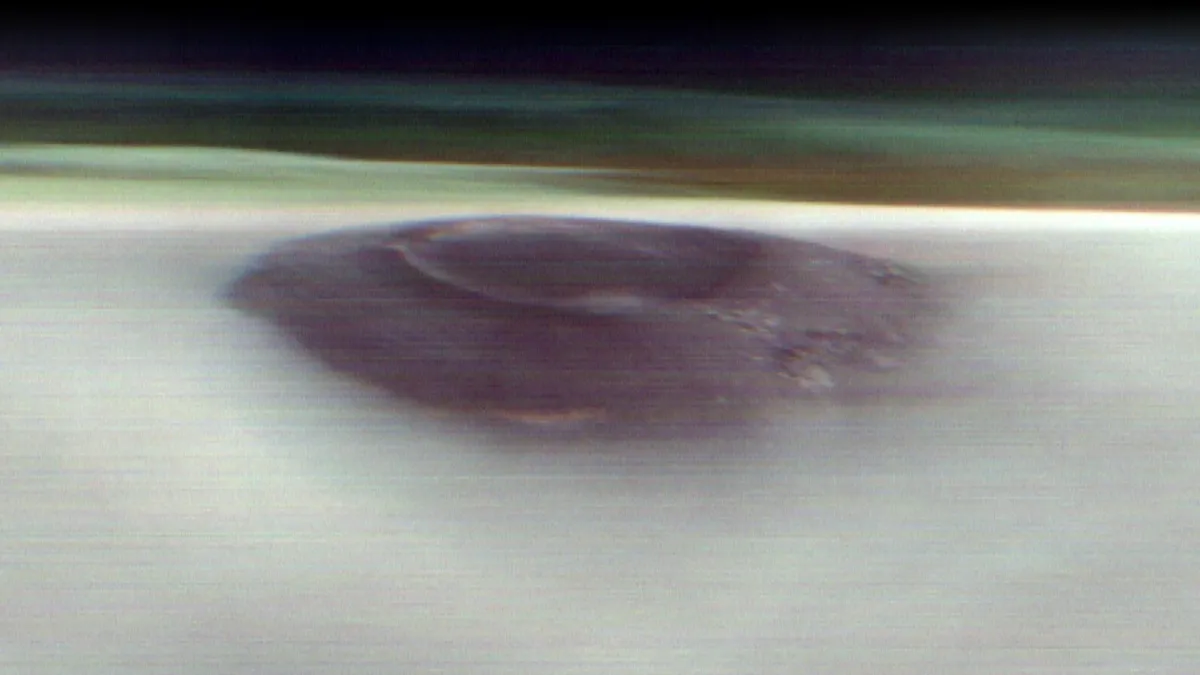
On June 6, 2025, just after sunrise, NASA's 2001 Mars Odyssey orbiter captured a stunning image of Arsia Mons, one of the largest volcanoes on Mars, as it peeked through the cloud cover. This remarkable volcano is part of the Tharsis volcanoes, a trio that is uniquely aligned on the Martian surface.
Arsia Mons stands tall at over 12 miles (20 kilometers) in height, with an impressive diameter of 270 miles (450 kilometers). To put its size into perspective, it is nearly twice the height of Mauna Loa, Earth's largest volcano, which rises about 6 miles (9 kilometers) from the seafloor. The towering height of Arsia Mons often results in a thick cover of clouds, formed when warm air rises up the slopes of the volcano and cools rapidly. This cloud formation is particularly prominent during the aphelion, the time when Mars is farthest from the sun in its orbit. According to NASA, these clouds are referred to as the aphelion cloud belt and are most prevalent around the planet's equator.
Arsia Mons is the southernmost volcano among the trio known as the Tharsis Montes or Tharsis mountains, located in the western hemisphere of Mars, near the equator. The alignment of these remarkable volcanoes suggests that a significant fracture in the Martian crust may have triggered the volcanic eruptions that formed all three. NASA's Jet Propulsion Laboratory (JPL) has indicated that to the northwest of Arsia Mons lies Olympus Mons, the largest volcano in the entire solar system, towering at a staggering 16 miles (25 kilometers).
The cloud cover surrounding Arsia Mons has made it challenging for scientists to capture clear images of the volcano. However, the recent photograph taken by NASA's 2001 Mars Odyssey orbiter provides a groundbreaking view of the volcano's peak. This image marks a historic moment, as it is the first time any of the Tharsis volcanoes has been shown on the horizon, offering a perspective akin to what astronauts aboard the International Space Station witness when observing Earth.
Unlike many other regions of Mars, where dust storms composed of carbon dioxide clouds prevail, the clouds surrounding Arsia Mons are primarily made of water ice. Remarkably, the Martian atmosphere holds more water vapor than the upper layers of Earth's atmosphere, according to findings from JPL. This unique characteristic of Arsia Mons provides scientists with valuable insights into how cloud formations and storms develop on the Red Planet.
For those interested in delving deeper into the wonders of Mars and its geological features, including the colossal Arsia Mons, stay tuned for more updates from NASA and other space exploration agencies. The study of Martian volcanoes not only enhances our understanding of the planet's history but also sheds light on the atmospheric dynamics that affect its weather patterns.